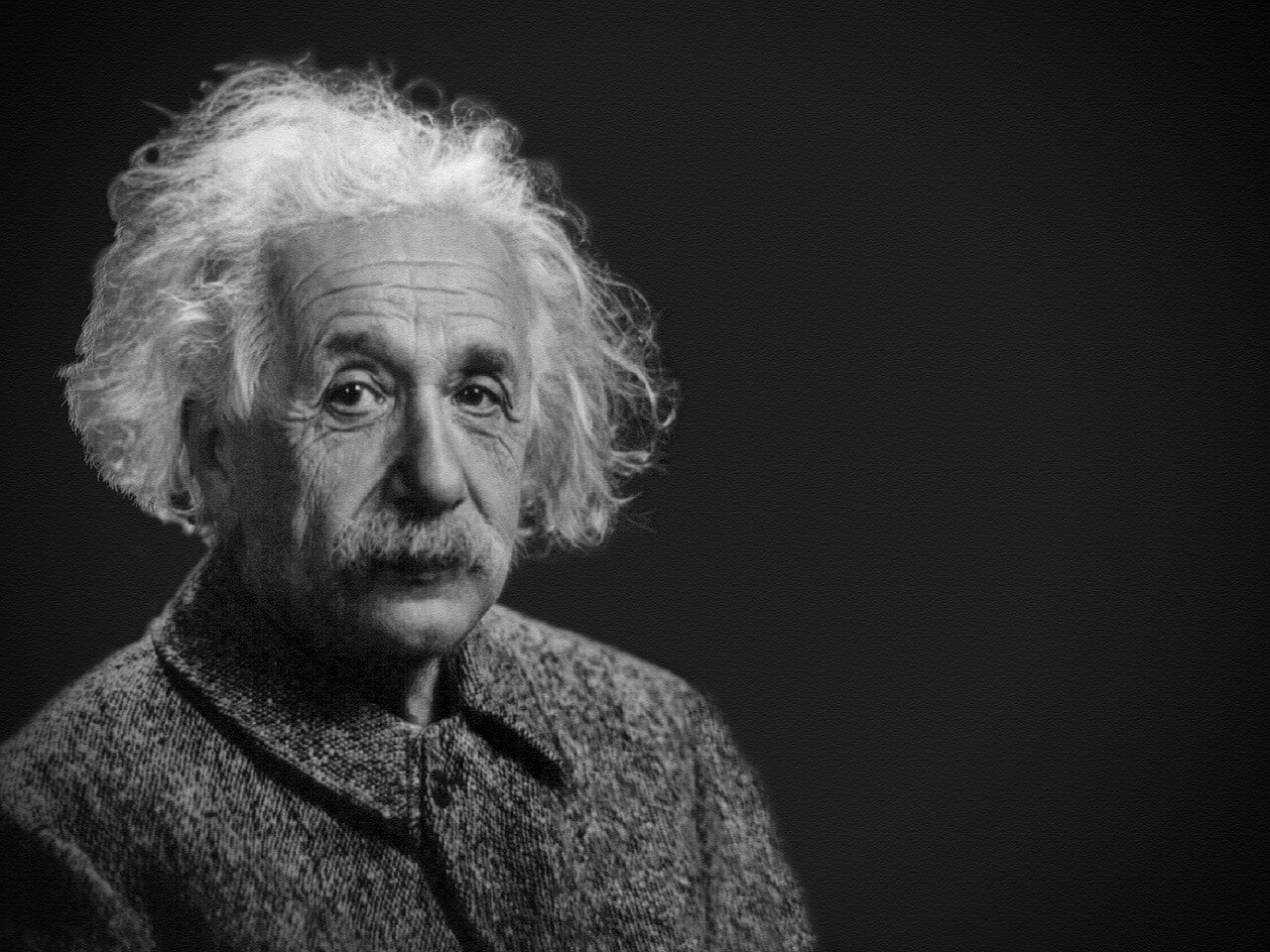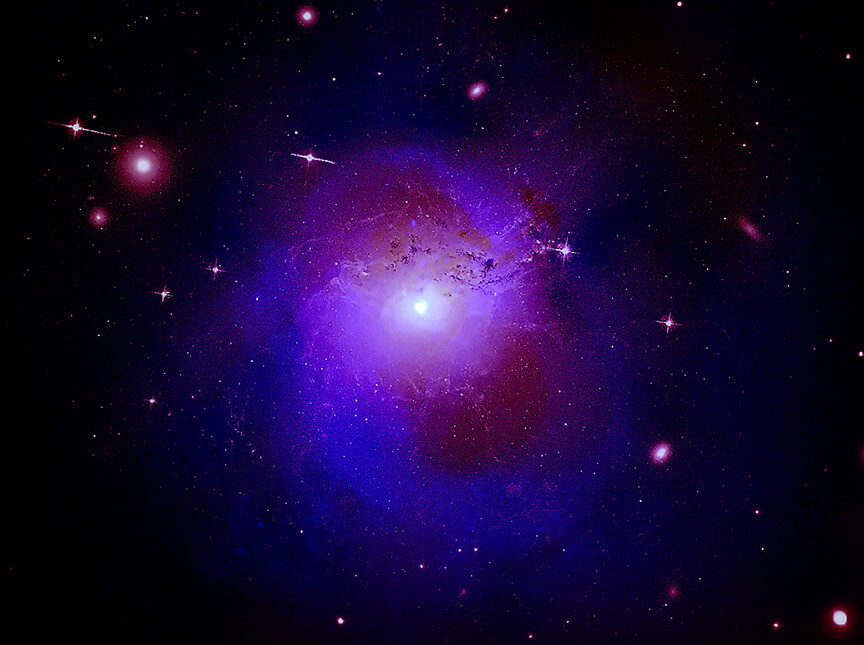What is Dark Energy and Dark matter
The dark side of the cosmos: what’s hidden?
Video of the day August 28th 2019
From what it is, what it might be in the future, and how it’s expanding our universe, join us as we ask and explain the question, “What is Dark Energy and Dark Matter?”
11. The Origins of Dark Energy and Dark Matter
To know what Dark Energy and Dark Matter is on a basic level, we need to look at the very beginning of the universe itself. You see, scientists believed that the universe had “stopped growing” after the Big Bang. Or, at the very least, had “slowed down” from the rapid expansion that created the universe. Which would make sense when you think about it, because after a while, the expansion would have to stop, right?
But then, in 1920, Edwin Hubble made a discovery that the universe was still growing, and it didn’t show signs of stopping. This sent many scientists into a tizzy because it wasn’t clear what would cause the universe to continue to expand. Could the energy from the Big Bang truly have been infinite? or was something else coming forth to cause the expansion? The answer that was found (in theory at least) was that of the concept of Dark Energy and Dark Matter.
First up, Dark Energy. This principle posed by scientists is that it’s a type of energy that is literally pulling at the universe, thus allowing it to expand. All matte in the universe have a type of gravity, and that holds the universe together, but this Dark Energy is pulling it apart in a way that counteracts the gravity of the universe without destroying it. Which is a good thing. Because it’d be the opposite of pulling at something like Play-Doh until eventually it breaks. We currently don’t have to worry about that.
And then, there’s the notion of Dark Matter. This arrived in thought in the 1960’s and 1970’s by scientists stating that the universe is made up of more than we can just see, and it’s through this invisible matter that the Dark Energy may truly come forth from. It’s invisible, but it’s there.
Now I’m sure your minds have been blown and confused multiple times during that explanation. But there is a small bright spot for those who are still confused. Mainly, both of these concepts are still just theoretical. Despite many sciences backing up that it could be out there…no one can prove that it is, or at least, hasn’t proven it yet. Dark Matter in particular is nearly impossible to capture, especially with our perceptions of it right now. As for Dark Energy, it’s hard to define it, let alone “prove” it.
The Large Hadron Collider is said to be a stepping stone to getting Dark Matter, but it’s unclear if it will truly produce what they need to prove the theory. Only time will tell on that front, and it’s not as easy as it sounds to just “make” the Collider work.
So that’s a loose definition about Dark Energy and Dark Matter, now we’ll dive more into it and how it affects everything in the universe, as well as is “constructed”.
10. Dark Matter Goes Beyond “Invisible”
So, as I noted before, one of the biggest problems in proving the notion of Dark Matter is that it’s something that is invisible, and thus hard to detect. But it’s more than just being invisible to the naked eye. After all, our own science and life are full of things that can’t be “seen” by the naked eye, and yet are visible with magnification or other spectrums. So is that the case with Dark Matter? Are we just not “looking hard enough”?
Well…no. That’s part of the mystery that is Dark Matter. Because it is invisible, but it also doesn’t emit any radiation or signature that would show up on the electromagnetic spectrum or radar. Scientists have many tools to detect all kinds of radiation, and have used them on satellites in space to see what they could find. And yet, despite these tools, we haven’t been able to detect Dark Matter.
That’s not to say that we’re giving up, far from it. It just means that scientists have to refine their tools and abilities even more to try and find Dark Matter. Plus, it could be that Dark Matter emits an unknown kind of radiation or energy (not meaning Dark Energy) that we don’t know about. Anything is possible at this point.
9. Dark Matter Holds Galaxies Together
So given all the theories and mysteries around Dark Matter, you might be wondering why we think it exists at all outside of the expansion of the universe. To that, I would answer that many scientists believe that Dark Matter is the reason that galaxies exist as we know them. How does that work when the Big Bang apparently created everything? Simple, while the Big Bang was the “creation” event, many scientists have noted that galaxies shouldn’t stay together in their current forms. Meaning, they shouldn’t rotate in place. Instead, they should just fly apart.
But instead, they stay close (most of the times anyway, there are exceptions to the rule) and become “formed” objects in space. The reason for this is that Dark Matter has gravity, and scientists feel that because there is so much Dark Matter in the universe (up to 85% depending on which scientists you talk to), that the gravity exerted allows them to stay as “one.”
Again, not fully proven, but it’s one of many physics and math models that seem to explain the presence of Dark Matter without fully proving it.
8. The Cosmological Constant
Heading to Dark Energy now, let’s talk about a popular theory that was brought forward by none other than Albert Einstein himself! He believed that the universe could actually be born from nothing, and that the larger the universe got, the bigger the potential for energy that it could contain. This is what he called the “Cosmological Constant“.

While still technically a theory, this notion would explain a lot. Mainly, the universe is known to be expanding at quite a rate despite it being billions of years since the Big Bang. So why is it still growing? Dark Energy that has been created via the expanding universe.
Also, to that end, since it would be Dark Energy propelling everything and not the driving force of the Big Bang, that would mean that the large the universe gets, the more barren it gets as you reach the “outer limits” of it. So eventually, theoretically, the universe we know could just be a small bright dot in a near infinite well of darkness.
7. The Theory Of Everything
Continuing on with grand theories that could explain Dark Energy, Dark Matter, and more, there are many scientists who believe that the true answer for these forces, and all other mysteries of the universe can be found in…The Theory of Everything.
To be clear, The Theory of Everything is a concept that defines how the universe works and interacts with one another. It may seem at times that we have this answer already but that’s actually very far from the truth. Because EVERYTHING doesn’t always fall into one set of guidelines or beliefs, scientists have take the “divide and conquer” approach by making smaller theories about forces in the universe and then trying to combine them. Which has not worked so far. Such as String Theory, Quantum Mechanics, Theory of Gravity, and more.
That’s why many believe that Dark Energy and Matter DO exist, because these theories all have gaps and inconsistencies that these two properties could potentially bring answers to. But again, they’re hard to prove they exist.
6. Dark Matter Isn’t Evenly Distributed Through The Universe
This fact shouldn’t come as too big of a shock, but it does help explain certain inconsistencies about Dark Matter itself. Because of its nature, as well as its abilities, it would be very odd to find that Dark Matter is evenly put throughout the universe. If it was, it’d likely be much easier to detect, which we know that it isn’t.
For example, a major theory about Dark Matter is that it tends to gravitate towards the center of the galaxies in the universe for one reason or another. So because of this, there are “halos” of Dark Matter scattered throughout the galaxy, meaning that large clumps of them aren’t all throughout the cosmos, but in certain areas. Our own galaxy is said to be caught in the “winds” of Dark Matter particles.
Though given that Dark Matter does have gravity, and exerts large amounts of it at times, if they were evenly put throughout the universe, the shape of said universe might be very different.
5. It Bends The “Reality” Of Space As We See It
I want you to picture a clear night on Earth, and you’re looking up at the night sky and you see…what? Stars I would hope. But more than that, you see a multitude of stars, and occasionally a planet or two in the sky. And you’ve likely been told that this is the universe as we know it (more or less obviously) looking down at us. That’s both true and false.
Yes, the stars and planets you see (or observe via things like telescopes) are real, and they are “looking at us” via the light and radiation that they emit. However, how they actually look in space is different than how they look on Earth because of Dark Matter.
Due to the gravity of Dark Matter, and how much of it is theoretically out there in the universe, an effect is done because of the massive gravity wells known as “Gravitational Lensing”. Meaning that not unlike looking at a curved mirror, the image you see is stretched or thinned. Meaning that what you see isn’t exactly what you get.
Which is why NASA and other space organizations have very sophisticated instruments to break through this effect and see the planets and stars and galaxies as they truly are.
4. Dark Energy Could Be Another Major Fundamental Force Of The Universe
One of the stronger theories about Dark Energy and its presence in the cosmos lines up with the known properties of our universe. Mainly, the “fundamental forces” that hold it together. The ones that we know of and have scientifically confirmed include: gravity, electromagnetism, weak force, and strong force. Each doing something on either a large or small scale in order to keep the universe together and “flowing”.
But with Dark Energy, the potential is there that this is another fundamental force, and one that we don’t even know the full scale of. Again, this is potentially the energy that is causing the universe to expand infinitely. But it’s also possible that it’s something affecting the universe in a way that we honestly can’t perceive at the present time.
Many are trying to figure out just how much of an impact the Dark Energy out there is having so that it can be accounted for, as well as helping determine the “fate” of our universe.

3. We Know They Don’t Come From Black Holes
There are a lot of theories as to what Dark Matter is and isn’t and where it comes from, but one thing that most scientists agree on is that there are some entities in the universe that we know for sure it doesn’t come from. One of those things is Black Holes.
Now, objectively, it would make sense that Black Holes somehow create Dark Matter. Black Holes are invisible themselves, they exert massive amounts of gravity, and light can’t escape it. Which has many similar properties to Dark Matter.
Yet, we can detect Black Holes, and we’ve done so frequently. Plus, if the Black Holes of the Universe were helping spew out Dark Matter, that would mean that they can not only go faster than light and escape the pull of the Black Holes massive gravity well, but we’d have more of the gravitational lensing effect in our universe.
It’s a small step towards truth, but it’s one that lines up well with what we believe about Dark Matter and Dark Energy.
2. There Are Maps Of Dark Matter
Despite the fact that we can’t “detect” Dark Matter on a meaningful level, that doesn’t mean that we don’t have good guesses as to where it is and where it isn’t. in fact, there are actually maps out there right now that outline the basic places where Dark Matter is allegedly at. This is based on radiation relics left over from the Big Bang.
Through these maps, we see certain “hotspots” in regards to where the Dark Matter likely is, giving scientists a location to try and look for more proof as to what it is and where it can be found.
1. Will We Ever Truly Discover Dark Matter and Dark Energy?
That is the question, isn’t it? And what a question it is. The scientific community is honestly really divided on the notion of Dark Matter and Dark Energy. To the extent that there are many who agree that while many are close to finding proof of their existence, it’s also true that they could find proof that it doesn’t exist at all very soon.
Now, if we do find proof of it, it would drastically change our perceptions of the universe at a massive level. However, if we don’t find proof of it, or even disprove it, it would show that the universe is still a mysterious place. And that we have a lot to learn.
Only time will tell if Dark Matter and Dark Energy are definitively found.
subscribe to the insane curiosity channel
Insane Curiosity is a channel of astronomy, physics and future technology, which teach mostly about Space, Recent Space Discoveries/News, Future Events, The Solar System, Exoplanets, Mars, Colonization Plans, etc.). We prepare New videos almost every day. Learn With us and Stay Insanely Curious!

Subscribe For the Latest news & Updates
Subscribe For the Latest news & Updates
Get in touch with the Insane Curiosity Channel. Once in while you will receive emails about news, promos, and much more. Stay Tuned!
Insane Curiosity
Science made easy
All rights reserved
Who we are
Insane Curiosity is a channel of astronomy, physics and future technology, which easily explain science. We need science and science need us!
